This article was co-authored by Claudia Carberry, RD, MS. Claudia Carberry is a Registered Dietitian specializing in kidney transplants and counseling patients for weight loss at the University of Arkansas for Medical Sciences. She is a member of the Arkansas Academy of Nutrition and Dietetics. Claudia received her MS in Nutrition from the University of Tennessee Knoxville in 2010.
There are 19 references cited in this article, which can be found at the bottom of the page.
wikiHow marks an article as reader-approved once it receives enough positive feedback. In this case, 93% of readers who voted found the article helpful, earning it our reader-approved status.
This article has been viewed 368,026 times.
Are you getting enough fiber in your diet? You might be surprised at how much fiber you need each day. On average, adult women need to consume about 25 g of fiber daily and adult men need to consume about 38 g of fiber daily.[1] Reaching your daily fiber goals can help maintain the health of your digestive tract, manage a healthy weight and lower the risk of certain cancers (like colon or rectal cancer) heart disease and diabetes. However, it can be challenging to find the right mix of foods to meet your daily fiber needs. Following these steps can help you get much closer to your goal.
Steps
Choosing High Fiber Foods
-
1Eat 100% whole grains. Whole grains are a healthful and fiber-rich food group that can help you meet your daily fiber needs. Aim for 3-5 servings of 100% whole grains each day.[2]
- Whole grains are minimally processed and contain all 3 parts of the grain: the germ, endosperm and bran. The bran is the portion of the grain containing the most fiber.
- One serving of grains is 1 ounce. Aim to have a source of whole grains at most or all of your meals.
- Examples of whole grain foods include: brown rice, quinoa, oatmeal, millet and corn.[3]
-
2Vary your protein sources. Protein is an essential nutrient to your diet. In addition to animal-based protein sources (like chicken, dairy or beef), there are a variety of protein-rich foods that are also fiber-rich foods called legumes. These can help you meet your daily fiber goal. Legumes are vegetables that contain a relatively high amount of fiber. They include: lentils, beans and peas.[4]
- Specific types of legumes include: black beans, chick peas, split peas, navy beans, edamame/soy beans, fava beans, kidney beans and black-eyed peas.
- Legumes are a very healthful addition to your diet. In addition to being a great source of protein and fiber, they are also fairly high in folate, potassium, magnesium and iron.[5]
- Animal products do not contain fiber.[6]
Advertisement -
3Eat a fruit or a vegetable at each meal. Fruits and vegetables can also help you meet your daily fiber goal. Aim to include a fruit or vegetable at each meal and snack.[7]
-
4Eat more seeds, nuts, and legumes. Like beans, nuts are a tasty way to get additional fiber into your diet. Aim to add a serving of nuts a few times a week.[10]
- Peanuts, pistachios, pecans, sunflower seeds and almonds are especially great sources of fiber. A 1/4 cup of almonds has 4 grams of fiber in it.[11]
- Nuts also provide a healthy dose of protein and omega-3 fats.
-
5Take a fiber supplement. Consuming the recommended 25 or 38 g of fiber daily can be a challenge. If you're having trouble meeting this goal on a regular basis, you may want to consider adding a fiber supplement to your daily routine.[12]
- There are many different types of fiber supplements available. Generally, they're functional fibers, a type of fiber derived from plants that's beneficial to your health.
- Supplements may come in the form of powders, oils, capsules or chewable tablets. In addition, many processed foods contain added fiber. For example, soy milk or orange juice with added fiber.
- Note that many health professionals recommend consuming as much fiber as you can from natural sources (like whole grains or vegetables). Always check with your doctor before adding any type of supplement to your diet.
-
6Drink 64 oz clear of fluids daily. Water doesn't have any fiber added. However, with additional fiber in your diet, it's also very important to drink adequate amounts of fluids daily. Inadequate water consumption when increasing fiber can result in constipation.[13]
- 64 oz of water daily is a general rule to help you consume enough water. However, the Institute of Medicine recommends about 9-13 cups of fluids daily.
- Fiber works best when combined with water. It will absorb water and help make your stools soft and mobile.
- Drink water consistently throughout the day. Keeping a water bottle with you at all times to measure how much you need to drink can help.
Preparing Fiber-Rich Meals and Snacks
-
1Add fiber to your diet slowly. Aim to add about 5 g of fiber daily until you reach your goal. Adding too much fiber too quickly can result in some gastrointestinal stress like loose stools, constipation, painful bowel movements, bloating or gas.[14]
- Keep track of how much fiber you're eating and how much more you need to consume by keeping a food journal or using a food journal app. These can help you tally up your total fiber intake each day.
-
2Leave the skin on your fruits and vegetables. Incorporating more fruits and vegetables into your diet will add fiber. However, if you eat the skin on many fruits and vegetables, you can maximize the amount of fiber from that food.[15]
- For example, don't peel apples before you eat them or if you're eating potatoes, try to leave the skin in the dish (such as if making baked or mashed potatoes).
- Eating fruits with seeds is also a great way to consume more fiber. Berries are among the highest in fiber due to their miniature seeds that are consumed when eating them whole.
-
3Replace refined, processed grains with whole wheat products. Whole grains offer more fiber to your diet. Slowly swap out any refined grains you eat with 100% whole grains.[16]
- Try 100% whole wheat pasta or pasta made from brown rice or quinoa. If you don't like the taste, mix it with a little regular pasta.
- Have brown or wild rice instead of white rice. Alternatively, try some barley, quinoa or millet.
- Instead of white bread products, use 100% whole wheat bread. If you like to eat toast in the morning, make it whole wheat bread. Alternatively, there are brands of bread and English muffins that have 5 or more grams of fiber per slice.
- Check to make sure processed foods like bread or pasta are 100% whole grain by reading the food label. The first ingredient should be 100% whole grain flour. No other refined or enriched flours should be listed.
-
4Eat a wholegrain or high fiber cereal for breakfast. If you can get a fiber-packed breakfast routine going, it may help you easily reach your daily fiber goal. If you don’t like the taste of these, don't worry; you can mix in half a cup of bran cereal with whatever other cereal you like.[17]
- Eat a cereal with 5 or more grams of fiber per serving. Read the food label to check how much fiber is in one serving (or however many servings you'll be eating) of that food.
- Cereals like oatmeal or a bran-based cereal are good options to start with.
- Substitute old fashioned steel cut oats for microwave instant oatmeal for an additional 2-4 grams of fiber per serving.
- If you have a favorite cereal you just can't let go of, add few tablespoons of unprocessed wheat bran or mix it with a high fiber cereal.
- Make sure your breakfast also includes protein to ensure that the high carb count in fiber rich foods doesn't cause a blood sugar spike/drop and cravings later in the day.
-
5Cook or prepare foods and recipes with high-fiber ingredients. Try changing up some of your recipes or meals to include more whole grain or high-fiber foods.[18]
- Bake muffins that incorporate crushed bran cereal or unprocessed wheat bran.
- Add fruits like berries, raisins, or bananas to your cereal or yogurt to increase your fiber by 1-2 grams.
- Substitute oat, flax or whole wheat flour for white flour in baked goods for an additional 1-2 grams of fiber per serving.
- If you're making pancakes or waffles from scratch, substitute wheat bran for a third of the all purpose flour.
- Add crushed bran cereal or unprocessed wheat bran to casseroles, salads, cooked vegetables, and baked products (meatloaf, breads, muffins, casseroles, cakes, cookies).
- Add beans and lentils to salads, soups or stews for an extra boost of fiber.
-
6Choose high fiber snack foods. Including fiber-rich food choices for snacks will also help you meet your daily goal.[19]
- Fiber rich snacks include: carrots and hummus, a handful of edamame, raisin and nut trail mix or popcorn.
- You can also try pre-packaged foods that contain high amounts of fiber as well. Granola bars and dry cereal can be a great high-fiber snack.
-
7Prepare international recipes. A variety of international cuisines focus on whole grains and legumes – both of which are high in fiber. Foods like Indian, Lebanese or Mexican feature beans, lentils and rice.[20]
- Try a few online websites for recipes or purchase a cookbook to have on hand at home.
- When preparing international dishes, always choose whole grains. A recipe may call for white rice, but use brown rice instead.
-
8Add frozen vegetables to soups. A quick and healthy way to boost fiber intake is to add frozen vegetables to any soups you are preparing. This is a low calorie way to add more bulk to your diet and vegetables are low calorie and healthy as well.
- Toss in a few handfuls of frozen broccoli, cauliflower, carrots or peas a few minutes before the soup is finished cooking and you’ll have a nutrient packed low calorie meal in minutes.
-
9Add flaxseeds to yogurt. Another great way to increase fiber in your diet is to start adding flaxseeds to your bowl of yogurt or cereal in a morning. Flaxseeds are a rich source of fiber, plus they are loaded in essential fatty acids which are imperative for good health.
- Flaxseeds help to control your blood sugar levels as well, so that you don’t suffer an energy crash shortly after eating.
- Add flaxseeds to your smoothies for extra fiber.
-
10Add some berries into your protein shake. Blackberries particularly are high in fiber, so if you can add a half cup to some protein powder, skimmed milk, yogurt and a few ice cubes, you will have a very nutritious dense shake in minutes that is protein rich as well as high in fiber.[21]
- Berries are also rich in antioxidants, which help promote general health.
- Add chia seeds for extra fiber and omega fatty acids.
Sample High-Fiber Diet
Expert Q&A
-
QuestionHow do I eat a low carb, high fiber diet?
 Marjan Mahallati, RHN, AADPMarjan Mahallati is a Registered Holistic Nutritionist, board certified through the AADP (American Association of Drugless Practitioners) and a graduate of the Canadian School of Natural Nutrition. She is the owner of Let's Nutrition Weight Loss & Nutrition Center in Irvine, California, where she teaches clients how to lose weight and achieve optimal nutrition and health. Marjan has over 15 years of experience in the weight loss industry and has empowered thousands of people to gain their health back and live their healthiest lives.
Marjan Mahallati, RHN, AADPMarjan Mahallati is a Registered Holistic Nutritionist, board certified through the AADP (American Association of Drugless Practitioners) and a graduate of the Canadian School of Natural Nutrition. She is the owner of Let's Nutrition Weight Loss & Nutrition Center in Irvine, California, where she teaches clients how to lose weight and achieve optimal nutrition and health. Marjan has over 15 years of experience in the weight loss industry and has empowered thousands of people to gain their health back and live their healthiest lives.
Registered Holistic Nutritionist Include plenty of fruits and vegetables in your diet. You should also choose whole grains that are high in fiber and low in carbs, like quinoa.
Include plenty of fruits and vegetables in your diet. You should also choose whole grains that are high in fiber and low in carbs, like quinoa.
Warnings
- Always consult your doctor before making any major dietary changes or prior to adding supplements to your diet.⧼thumbs_response⧽
References
- ↑ https://www.eatright.org/food/vitamins-and-supplements/types-of-vitamins-and-nutrients/easy-ways-to-boost-fiber-in-your-daily-diet
- ↑ https://wholegrainscouncil.org/whole-grains-101/how-much-enough
- ↑ https://www.hsph.harvard.edu/nutritionsource/what-should-you-eat/whole-grains/
- ↑ https://www.helpguide.org/articles/healthy-eating/choosing-healthy-protein.htm
- ↑ https://medlineplus.gov/ency/patientinstructions/000726.htm
- ↑ https://www.helpguide.org/articles/healthy-eating/high-fiber-foods.htm
- ↑ https://www.med.umich.edu/mott/pdf/mott-fiber-chart.pdf
- ↑ https://www.helpguide.org/articles/healthy-eating/high-fiber-foods.htm
- ↑ https://www.helpguide.org/articles/healthy-eating/high-fiber-foods.htm
- ↑ https://www.health.harvard.edu/nutrition/quick-start-guide-to-nuts-and-seeds
- ↑ https://www.myfooddata.com/articles/nuts-seeds-high-in-fiber.php
- ↑ https://www.ucsfhealth.org/education/fiber-supplements
- ↑ https://my.clevelandclinic.org/health/articles/14400-improving-your-health-with-fiber
- ↑ https://familydoctor.org/fiber-how-to-increase-the-amount-in-your-diet/
- ↑ https://eat-move-save.extension.illinois.edu/blog/eat-more-fiber-and-boost-your-health
- ↑ https://www.myplate.gov/eat-healthy/grains
- ↑ https://health.clevelandclinic.org/move-over-oatmeal-7-grains-you-should-try-for-breakfast/
- ↑ https://www.helpguide.org/articles/healthy-eating/high-fiber-foods.htm
- ↑ https://my.clevelandclinic.org/health/articles/14400-improving-your-health-with-fiber
- ↑ http://edition.cnn.com/2010/HEALTH/08/25/healthiest.ethnic.cuisines/index.html
- ↑ https://health.clevelandclinic.org/how-to-make-healthy-and-delicious-smoothies/
- ↑ https://health.clevelandclinic.org/whats-the-difference-between-soluble-and-insoluble-fiber/
- ↑ https://studentaffairs.duke.edu/sites/default/files/u110/TooMuchFiber082015.pdf
About This Article
If you want to become healthier by adding more fiber to your diet, start by replacing refined grains, like white rice and white bread, with 100% whole grains, like brown rice, quinoa, oatmeal, or corn. Eat a 1 ounce serving of 100% whole grain foods like brown rice, quinoa, oatmeal, or corn 3-5 times a day. Fruits and vegetables are another great source of fiber, so aim to include them in every meal and snack. You can also alter your meals to include fiber-rich legumes like black beans or soy beans as a protein source instead of animal products, which offer no fiber. For more tips from our Dietician co-author, including how to choose a fiber supplement, read on!
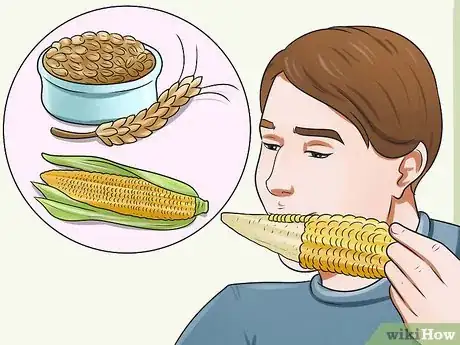
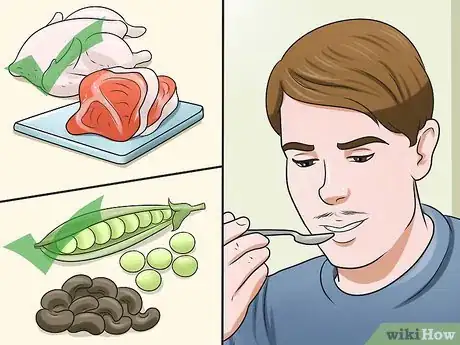
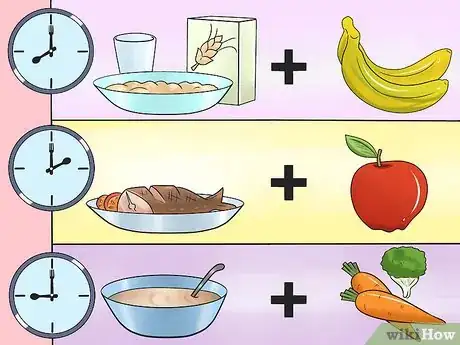
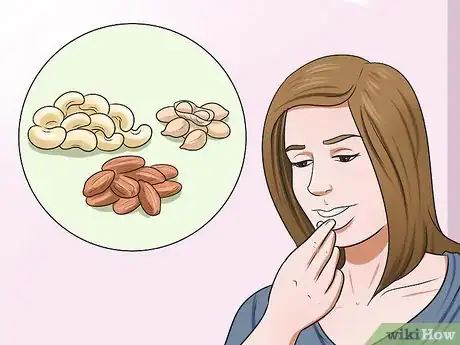
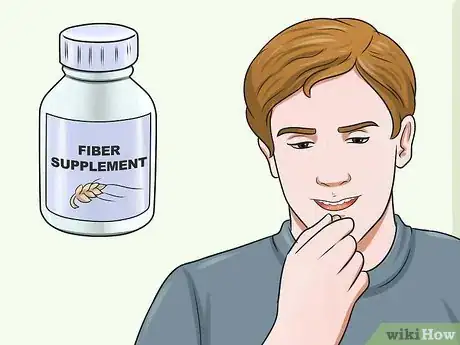

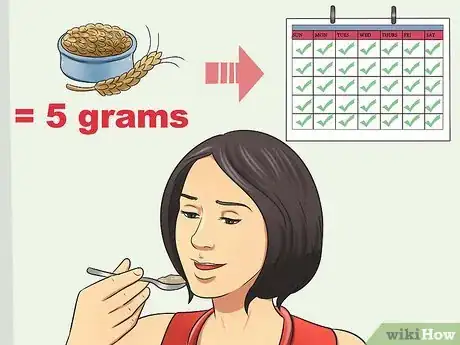
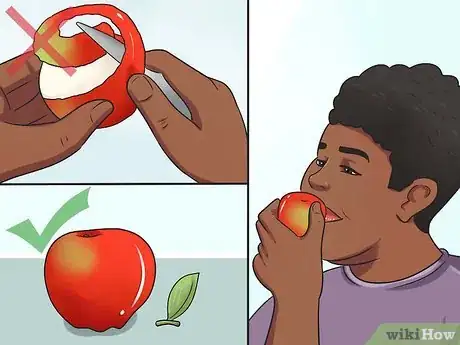

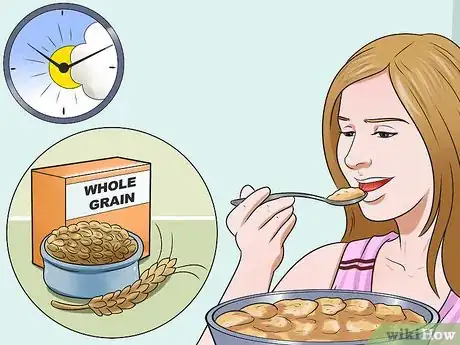
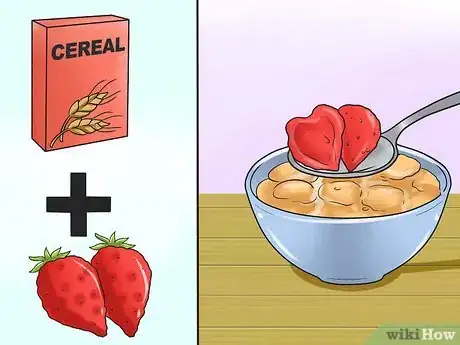


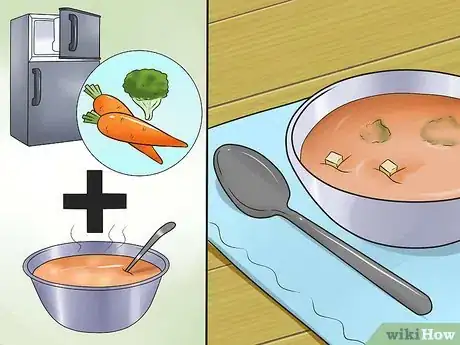
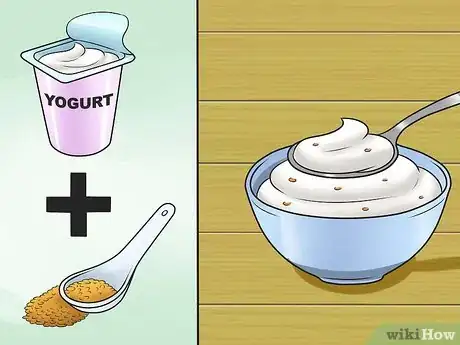
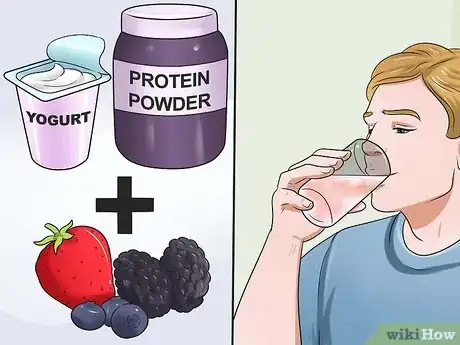
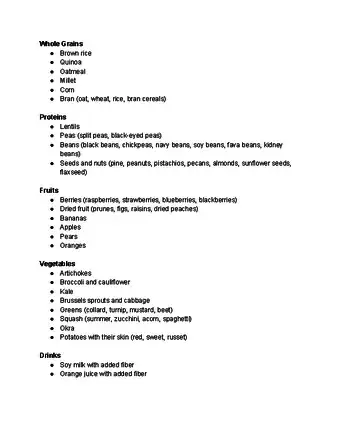
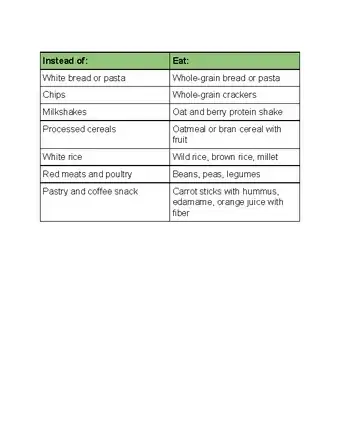
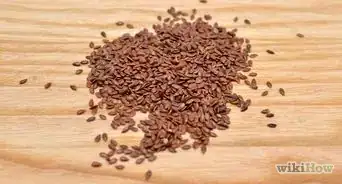


























































Medical Disclaimer
The content of this article is not intended to be a substitute for professional medical advice, examination, diagnosis, or treatment. You should always contact your doctor or other qualified healthcare professional before starting, changing, or stopping any kind of health treatment.
Read More...